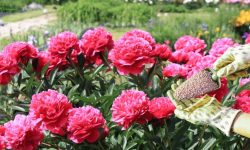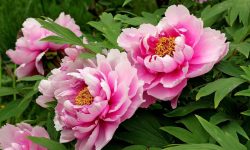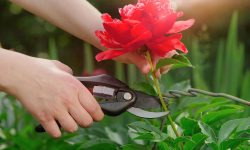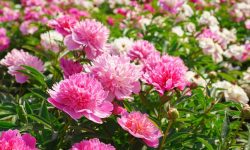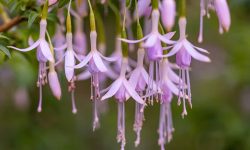Zinnias are among the most colorful and cheerful annual flowers you can grow from seed. With a wide range of varieties, heights, and vibrant hues, they bring life to any garden or patio. One of the most appealing aspects of zinnias is how easy they are to grow—making them perfect for both beginners and seasoned gardeners.
Learning how to grow zinnias from seeds is a rewarding experience that not only saves you money but also offers the satisfaction of watching your flowers bloom from scratch. In this guide, you’ll discover everything you need to know, from selecting the right seeds to nurturing your plants through to full bloom.
Why Choose Zinnias for Your Garden?
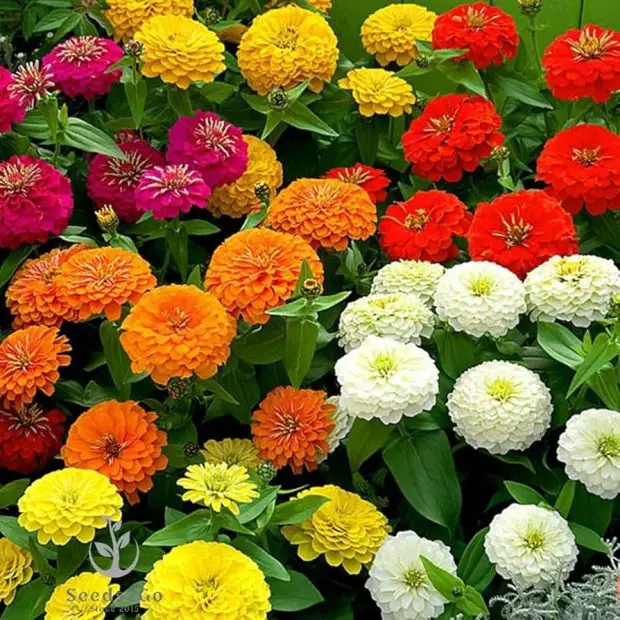
Zinnias are popular for many reasons. They bloom quickly, thrive in warm weather, and are highly tolerant of drought once established. Their bold, daisy-like flowers attract bees, butterflies, and hummingbirds, making them excellent companions for pollinator gardens. With options ranging from compact varieties to towering plants over three feet tall, zinnias can fill containers, borders, and flower beds with color all summer long.
They also make exceptional cut flowers. With strong stems and long-lasting blooms, zinnias bring garden color indoors with ease. And unlike more delicate flowers, zinnias don’t require complicated maintenance or growing conditions, making them one of the easiest flowers to start from seed.
Choosing the Right Zinnia Seeds
The first step in growing zinnias from seeds is deciding which variety fits your garden’s style and space. Some zinnias, like the ‘Thumbelina’ series, grow low and compact—ideal for containers or borders. Others, such as ‘Benary’s Giant’ or ‘California Giants,’ reach impressive heights and feature large, showy blooms perfect for cutting gardens.
When buying seeds, pay attention to bloom size, plant height, and color palette. Consider whether you want a uniform look or a mix of different shapes and shades. Most seed packets provide detailed information about spacing, germination time, and maturity, which will help guide your planting schedule.
When to Start Planting Zinnia Seeds
Zinnias are warm-season annuals that thrive in heat and full sun. They are highly sensitive to frost, so timing is critical. If you’re sowing seeds outdoors directly in the garden, wait until all danger of frost has passed and the soil has warmed to at least 60°F (16°C).
For an earlier bloom period, you can start seeds indoors about four to six weeks before your region’s last frost date. This gives the plants a head start, allowing them to bloom sooner once transplanted into the garden. However, since zinnias grow quickly, indoor starting isn’t required for success—direct sowing works very well.
Preparing the Soil for Zinnias
Zinnias prefer well-draining soil rich in organic matter. Choose a location that receives at least six hours of direct sunlight daily. Before planting, loosen the soil to a depth of about 8 to 10 inches and mix in compost or aged manure to improve fertility and drainage.
Avoid heavy clay soils that retain too much moisture, as soggy roots can lead to disease. Similarly, overly sandy soils may benefit from added compost to retain sufficient nutrients. Soil pH should ideally be slightly acidic to neutral, around 6.0 to 7.5.
In containers, use a high-quality potting mix with good drainage properties. Choose pots with drainage holes to prevent root rot and allow excess water to escape.
How to Sow Zinnia Seeds
When sowing zinnia seeds outdoors, plant them about a quarter inch deep into the prepared soil. Space the seeds a few inches apart in rows or clusters depending on the final spacing requirements of your chosen variety. Once the seedlings emerge and reach a few inches tall, thin them out to prevent overcrowding, giving each plant enough room to mature.
If starting indoors, use seed trays or small pots filled with moist seed-starting mix. Gently press the seeds into the surface and cover them lightly with soil. Keep the containers in a warm area with bright light. Maintain even moisture but avoid waterlogging. Zinnia seeds usually germinate quickly—within 5 to 10 days.
Once the indoor seedlings have developed two sets of true leaves and the outdoor weather is suitable, harden them off by gradually introducing them to outdoor conditions over a period of several days before transplanting them into the garden.
Caring for Young Zinnia Seedlings
After germination, young zinnia plants require attention to establish strong roots and stems. Provide consistent moisture, but do not let the soil remain soggy. Too much moisture invites fungal diseases, especially in crowded plantings. Water at the base of the plant to keep leaves dry.
Adequate sunlight is essential for healthy growth. Without it, seedlings may become leggy and weak. If growing indoors, a grow light can supplement natural light to promote sturdier growth. Outdoors, ensure they receive direct sunlight for most of the day.
Once the seedlings are established, begin feeding them with a balanced, water-soluble fertilizer every two to three weeks to encourage lush foliage and budding. Mulching around the base of the plants helps conserve soil moisture and suppress weeds.
Thinning and Spacing for Better Growth
Proper spacing is crucial to ensure air circulation and prevent fungal diseases such as powdery mildew. When thinning seedlings, choose the healthiest and strongest ones, and remove the weaker or crowded sprouts. Depending on the variety, zinnias should be spaced anywhere from 6 inches to 24 inches apart.
Giving each plant room to grow helps them develop strong stems and larger flowers. Crowded conditions lead to poor air flow, which can encourage pest and disease problems later in the season.
Supporting Tall Zinnia Varieties
Some zinnias, especially the taller cutting types, can grow several feet tall and benefit from staking. If you’re growing zinnias for flower arrangements, keeping the stems upright and straight is essential. Stake them early in the growing process to avoid damaging roots later.
You can use bamboo sticks, garden stakes, or even tomato cages to support tall zinnias. Tie the stems loosely using garden twine, ensuring they have room to move slightly in the wind, which actually strengthens the plant naturally.
Pinching for More Blooms
Pinching back the central stem when zinnia plants are about 8 to 12 inches tall encourages bushier growth and more flower production. This technique redirects the plant’s energy into side branches, resulting in fuller plants covered with blooms.
Simply pinch or snip off the top inch of the central stem above a leaf node. The plant will respond by sending out new shoots, each of which will develop its own flower head. This method is especially effective for zinnias grown in cutting gardens or floral displays.
Keeping Zinnias Blooming All Season
To keep your zinnias flowering continuously throughout summer and early fall, remove spent blooms regularly. This process, known as deadheading, prevents the plant from putting energy into seed production and encourages it to produce new buds instead.
Regular feeding, especially with a bloom-boosting fertilizer high in phosphorus, will also support ongoing flower production. Avoid high-nitrogen fertilizers, which promote leafy growth at the expense of blossoms.
Water deeply during dry spells, especially when buds are forming. Consistent moisture without overwatering is key. Zinnias can tolerate heat, but prolonged drought will slow blooming.
Saving Seeds for Future Seasons
As the season ends, you can collect seeds from mature zinnia flowers to plant the following year. Allow a few flower heads to dry completely on the plant. When they become brown and papery, snip them off and gently pull out the seeds.
Store zinnia seeds in a cool, dry place in labeled envelopes or containers. Saved seeds can remain viable for several years when stored properly, offering a sustainable and rewarding cycle for gardeners.
Keep in mind that seeds collected from hybrid varieties may not produce plants identical to the parent, but they can still yield beautiful and unexpected results.
Common Problems and How to Solve Them
Zinnias are generally easy to grow, but they can occasionally face problems. Powdery mildew is a common issue, especially in humid climates or crowded plantings. Improve airflow by spacing plants appropriately, and water at the base to keep foliage dry.
Aphids and spider mites may appear on young leaves, especially in dry, dusty conditions. A blast of water or insecticidal soap can usually keep these pests in check. Japanese beetles can also nibble on flowers, but handpicking them early in the day often helps control the problem.
Root rot is typically caused by poor drainage or excessive watering. If growing in containers, ensure they have drainage holes. If growing in the ground, consider amending heavy soil with compost to improve water movement.
FAQ About Growing Zinnias from Seeds
How long do zinnias take to grow from seed to bloom?
Zinnias typically bloom about 60 to 70 days after planting the seeds, depending on the variety and growing conditions. Some dwarf varieties may flower even sooner.
Can I plant zinnia seeds directly in the ground?
Yes, zinnia seeds can be sown directly into the ground after the last frost. They germinate quickly and grow well in warm, sunny conditions.
Do zinnias need full sun to thrive?
Zinnias prefer full sun and need at least six hours of direct sunlight each day to produce abundant blooms and stay healthy.
What causes zinnia seedlings to become leggy?
Legginess in zinnia seedlings is usually caused by insufficient light. Make sure they receive adequate sunlight or use grow lights when starting indoors.
Can I grow zinnias in pots?
Absolutely. Zinnias grow well in containers as long as the pots have good drainage and are large enough to accommodate the root system. Compact varieties are especially suited for pots.
How often should I water zinnia plants?
Water zinnias when the top inch of soil feels dry. It’s best to water deeply but infrequently to encourage deep root growth, while avoiding water on the leaves to prevent mildew.
Will zinnias come back next year?
Zinnias are annuals, so they complete their life cycle in one growing season. However, you can save seeds from mature flowers to replant next year.
What fertilizer is best for zinnias?
Use a balanced, all-purpose fertilizer during early growth. Switch to a bloom-enhancing fertilizer higher in phosphorus when buds begin to form for more vibrant flowers.
Should I deadhead zinnias?
Yes. Regularly removing spent flowers encourages the plant to produce more blooms and keeps the garden looking tidy.
Can I grow zinnias indoors?
Zinnias are best suited for outdoor conditions. While you can start them indoors, they require a lot of light and space, so it’s usually better to transplant them outside once the weather warms up.
Conclusion: Enjoy the Colorful Rewards of Zinnia Gardening
Planting zinnias from seed is a simple, satisfying, and colorful way to fill your garden with summer-long blooms. Whether you’re growing a compact variety in containers or a tall mix for cutting, the process of starting from seed allows for creativity and a deep connection to the growing cycle.
By choosing the right variety, preparing the soil well, and giving your plants proper care through watering, thinning, and deadheading, you’ll be rewarded with vibrant, long-lasting flowers that brighten your space and attract pollinators.
With just a little effort and attention, zinnias grown from seed can become the stars of your garden—and the envy of anyone who passes by.

